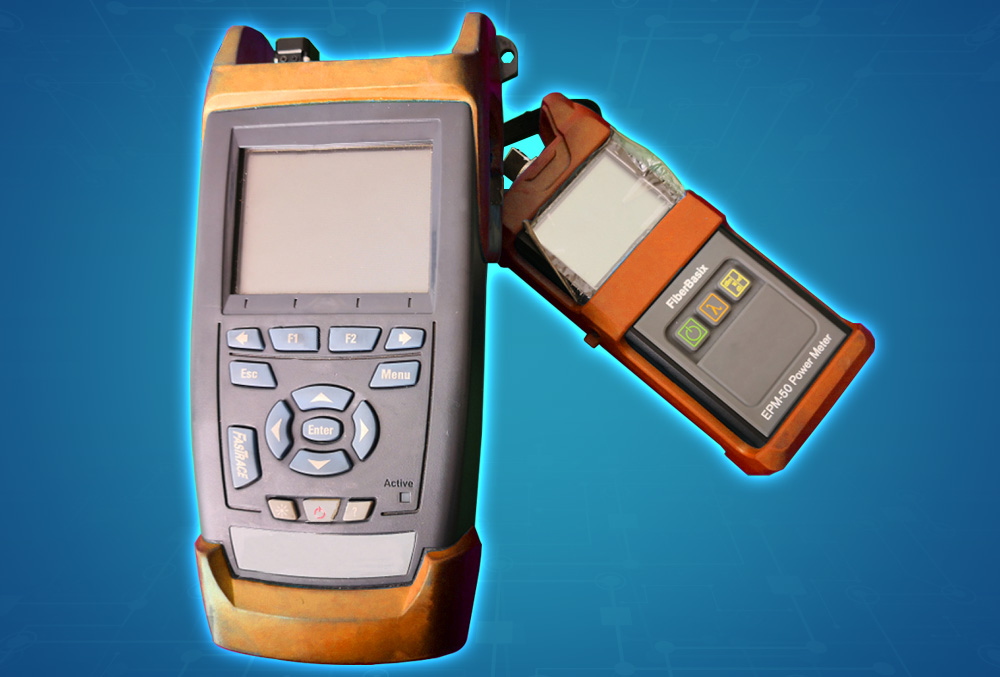[vc_row][vc_column][vc_column_text]Over the years, fiber optic networks have helped numerous companies to enhance business performance. Higher bandwidth and faster internet speed are just a few of the many benefits that fiber optics bring – and these perks have paved the way for a productive working environment.
But like everything else in this world, fiber optic cables can degrade over time until it’s no longer usable. That’s why it’s important to know the proper maintenance to enjoy its full potential. These cables don’t break easily, but that doesn’t mean that it won’t. That’s why it’s important to constantly protect these cables and create a proper infrastructure for fiber optic cable management.
Fiber Optic Cable Problems You Have to be Wary Of
It is as clear as day how fiber optics can help your company progress in the business world. In fact, that’s the exact reason why there are a lot of businesses that hire certified fiber optic technicians to set up fiber optics in their establishments. But for you to continue enjoying these business perks for a long time, you have to do your part in protecting it as well.
Preparation is key to help you become combat-ready for these fiber optic cable problems. So here is a list of reasons why fiber optic cable users encounter network problems:
External Damage
One of the advantages of using fiber optic cables is its durability and susceptibility to wet weather conditions. Unfortunately, external damages are just less likely in this type of cable – there are still chances that your cables can get split up or scratched. And when that happens, the slightest damage can affect the performance of your fiber optic cables. That’s why it’s important to let accredited fiber optic technicians conduct thorough visual inspections. With their help, you would be able to spot these external damages before it’s too late and replace them to continue enjoying your fiber optic network like usual.
Cables with Excess Length
When it comes to fiber optic installations, it’s important to remember that the fiber optic cables used should be in the right length. Excess length of these fiber optic cables can cause it to bend, twist, and wind around itself – and whenever it does that, your cables can acquire permanent damage.
These cables are available in different lengths when you purchase them. So it’s advisable to identify the cable length that you need with a measuring tape before you buy it. You can do this easily by positioning all the equipment that you intend to connect with the fiber optic cable. Moreover, you can also purchase cables that contain a rod in order to prevent them from being bent.
Stretching
Other than the ones mentioned above, fiber optic cables that are excessively stretched across a distance can also cause problems to your fiber optic network. These fiber optic cables are composed of materials that can easily be damaged when stretched. That’s why it’s recommended to move the equipment connected by these cables closer to one another. Moreover, stretching can also happen when you pull the jacket of the cable manually. In order to remove these connectors safely, you have to use the grips to detach it from the socket that holds it.
Improperly Attached Connectors
Another reason why fiber optic cable users encounter network performance problems is improperly attached connectors. That’s why it’s crucial for organizations to check each of the connectors whether they are fitted properly or not. By doing that, they would be able to correct the connections and insert them properly. If the problems continue even when the connectors are attached properly, then that means it has to be replaced with another one that can fit securely on the fiber optic cables. That way you would be able to make sure that your connectors won’t slip out of place.
Broken Fibers
Aside from external damage, cables with excess length, stretching, and improperly attached connectors, one of the culprits of fiber optic cable problems are broken fibers. The only way to tell if your fibers are working correctly is to see that the light that shines on one end can be seen on the other end – and this issue can be tricky because it’s difficult to spot in plain sight. In order for you to check for damaged fibers, you have to use a fiber optic tracer. This tool highlights the faults found in the cable, making it easier to fix.
Fiber optics can be a powerful tool for businesses when it is handled properly. With this knowledge about the common problems found in fiber optic cables, you will be able to safeguard your cables and integrate best practices as you create a proper cable management system.
Why Proper Cable Management Systems Are Necessary
Having a fiber optic cable management system is like having a skeletal system to support your body’s muscles. This system can help your network avoid the risk of fiber damage, signal loss, and network failure. That’s why it’s crucial to have a proper cable management system in place.
To delve further into this topic, here are the benefits you can enjoy if you have this kind of system implemented in your workplace:
Bend Radius Protection
Optical fibers that are bent into a radius that’s too tight have the tendency to cause attenuation. And not just that, it can also cause damage to your fiber. With a proper cable management system, you will be able to create a minimum bend radius guideline that your technicians can follow. The minimum bend radius is usually set over 10 times bigger than the outer diameter of the cable. By doing this, you would be able to avoid cable malfunction and any other damage due to bending. This preventive measure will surely help you in the long run for it can help you reduce operating costs and lessen the possibility of network downtimes.
- Clear-Cut Cable Paths
When businesses have a well-made cable management system, they can help make the lives of fiber optic technicians easier. This clear-cut cable path can give technicians a roadmap to show them how and where they should place the fiber optic cables during installation. And with that, business owners can get the assurance that the network is set up in a logical and organized manner. That said, these cable routing paths can give business owners and technicians a win-win situation.
Easier Access for Network Maintenance
Another benefit that proper cable management brings is the easy access it gives for network maintenance. Without it, fiber optic technicians would have to dig through twisted heaps of fiber optic cabling – and that can be counter-productive in their part. Moreover, this action can also cause technicians to violate the rules regarding the minimum bend radius.
When you have a cable management system in place, you would be able to identify one cable from another. This makes it easier for technicians to remove the defective cable without damaging the other cables.
Tools You Can Use to Troubleshoot Fiber Optic Problems
It is undeniable that problems can still arise when you’re using fiber optics, but all that can be avoided with the preventive measures mentioned above. Aside from that, it’s also necessary to prepare the right tools that can be used to troubleshoot these fiber optic problems when they arise. That way you would be able to deal with these problems better and prevent them from going worse.
As you prepare the tools to make you combat-ready for fiber optic problems, you have to keep in mind that you’re dealing with light – not electricity. For that reason, you would need tools that can assist you as you work with the light that fiber optic uses.
Here are few of the tools that may come in handy:
Optical Power Meter
With the help of an optical power meter, you will be able to measure the frequency of the light going through the cables. Moreover, this device can also aid you as you determine the strength of the light that’s going through the cables.

Optical Time-Domain Reflectometer (OTDR)
This tool is a great help for technicians in finding the faults found in your business establishment’s fiber optic cables. OTDRs enable them to send a light signal into the cable. And through that, they would be able to measure the information and signal that are bouncing around the cable. This device is useful for businesses that use long cables because it eliminates the need to dig up everything to fix the damage.

Loopback Adapter
When you acquire an optical time-domain reflectometer, it’s important that you have a loopback adapter as well. Back then, loopback adapters were used on Ethernet and serial connections to test them. But at present, this tool is primarily used on fiber optic networks. This tool is placed on the other end of the fiber optic cable to serve as a little prism to reflect back the light that the OTDR sends out.
 [/vc_column_text][/vc_column][/vc_row]
[/vc_column_text][/vc_column][/vc_row]


